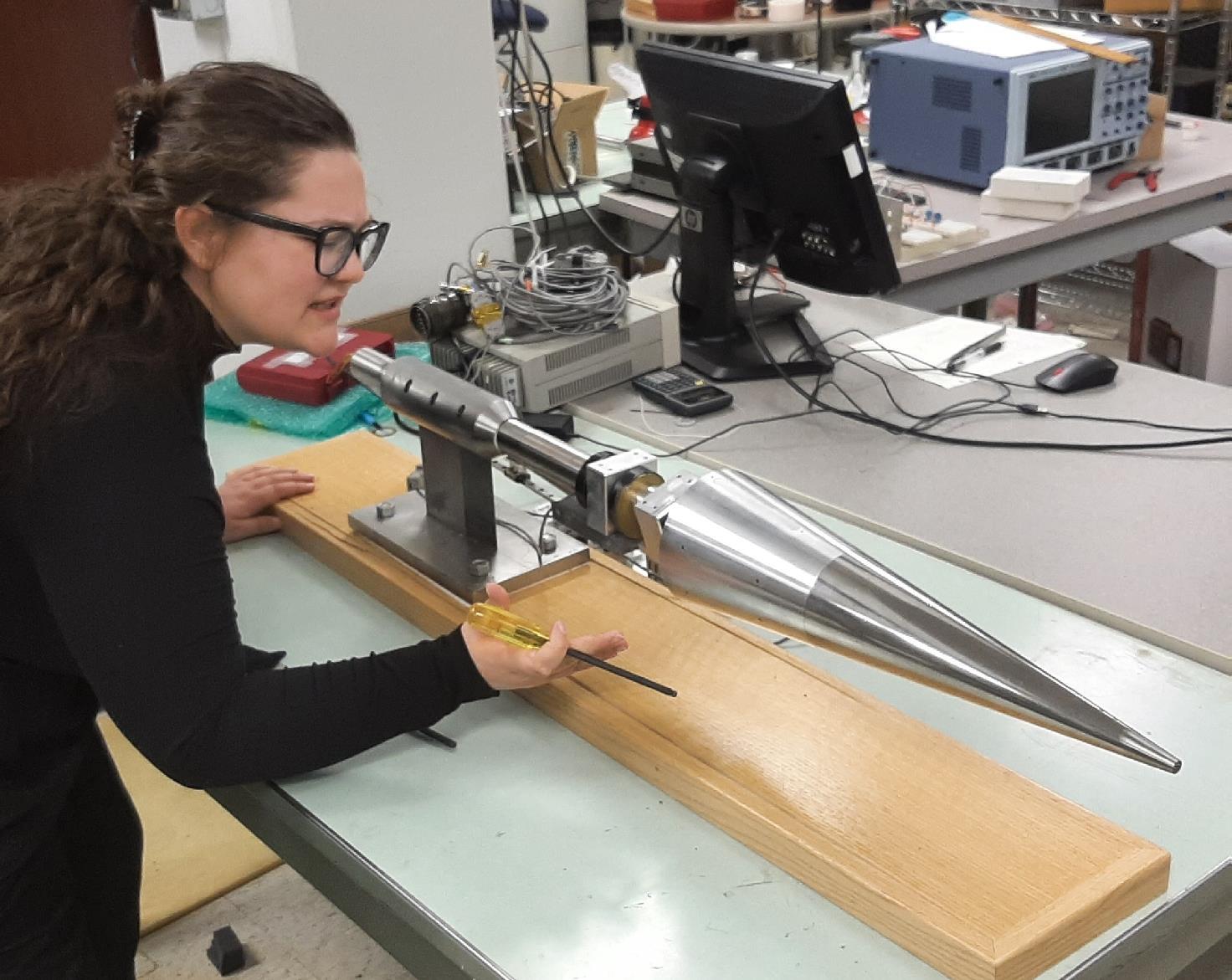CRANE, Ind. –
Naval Surface Warfare Center, Crane Division (NSWC Crane) partnered with the University of Notre Dame on a Naval Engineering Education Consortium (NEEC) project focusing on hypersonics.
NEEC provides project-based research funding conducted at colleges and universities throughout the United States. These projects tend to focus on the Navy’s most important technological needs and form ongoing relationships between academia and the Navy’s technical workforce.
 NSWC Crane and the University of Notre Dame’s recent NEEC project is titled Turbulent Transition Over Conical Nose Cones Combining Yaw and Nose Bluntness Effects. This project looks at how turbulence will occur within the boundary layer flow and how it will effect hypersonic vehicles.
NSWC Crane and the University of Notre Dame’s recent NEEC project is titled Turbulent Transition Over Conical Nose Cones Combining Yaw and Nose Bluntness Effects. This project looks at how turbulence will occur within the boundary layer flow and how it will effect hypersonic vehicles.
According to NASA's website, a boundary layer is “a thin layer of fluid near the surface in which the velocity changes from zero at the surface to the free stream value away from the surface. Engineers call this layer the boundary layer because it occurs on the boundary of the fluid.”
Dr. Eric Matlis, Associate Research Professor at the University of Notre Dame and temporary faculty at NSWC Crane, believes this project is important because of the critical nature hypersonics provides to the warfighter.
“Hypersonics is a national security issue for the Department of Defense. It is critical as we advance our capabilities to not fall behind in this area,” said Dr. Matlis.
For this project, Dr. Matlis worked alongside Dr. Thomas Corke, Clark Chair Professor in Engineering and Director of the Hypersonics Systems Initiative. They were able to use the University of Notre Dame’s Hypersonic Aerodynamics Lab which contains one of three hypersonic quiet tunnels in the United States.
“The NEEC project is related to the prediction of, if, and where turbulence onset will occur in the boundary layer flow over hypersonic vehicles,” said Dr. Corke. “This is extremely important because turbulence onset can lead to a five-times increase in the surface heating of the vehicle. If this is not accounted for in the design, it could lead to the loss of the vehicle.”
According to Dr. Matlis, the goal of this specific NEEC project is to understand delays in the boundary layer that could help improve on hypersonic vehicles.
“A better understanding of these mechanisms could lead to approaches to delay boundary layer transition on realistic hypersonic flight vehicles yielding higher performance, range, and survivability,” said Dr. Matlis.
Through this project, students are able to assist with research and receive hands-on learning to help with future initiatives in this field.
“The experience gained by graduate students and researchers in this effort is critical to the work force development mission that is central to the NEEC mandate,” said Dr. Matlis. 
Alyssa Spencer is a third year Ph.D. student working on the NEEC project. Her focus is in the Aerospace and Mechanical Engineering department at the University of Notre Dame, and her research is on fluid instability interaction in hypersonic boundary layers.
“While working on my research, I have learned valuable computational and applied engineering skills. Through this project, I intend to predict instability interaction, and then control the interaction to delay the transition to turbulent flow,” said Spencer.
According to Dr. Matlis, continuing research and development in hypersonics is not only important to our national defense, but also providing research opportunities to the next generation to continue this work is key to maintaining our defenses.
“Generally speaking, the development of hypersonic capabilities is important to national defense. In addition, training the next generation of researchers is critical to the development of capabilities that need to be expanded to ensure our nation’s safety. The NEEC program in hypersonics fulfills these missions,” said Dr. Matlis.
About NSWC Crane | NSWC Crane is a naval laboratory and a field activity of Naval Sea Systems Command (NAVSEA) with mission areas in Expeditionary Warfare, Strategic Missions and Electronic Warfare. The warfare center is responsible for multi-domain, multi- spectral, full life cycle support of technologies and systems enhancing capability to today's Warfighter.